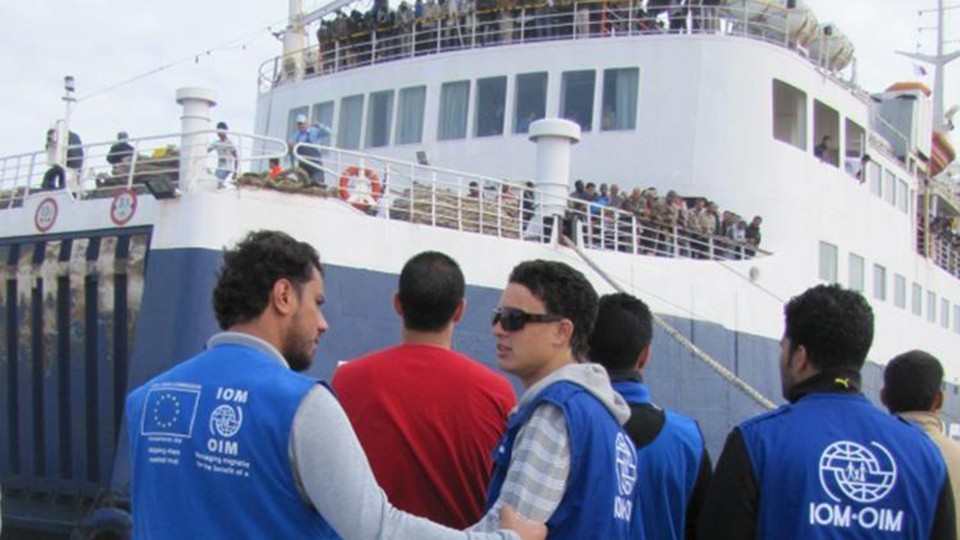The IOM World Migration Report 2020
“A lot has happened in migration in the last two years since the release of the World Migration Report 2018. The world has witnessed historic change at the global level with United Nations Member States coming together to finalize two global compacts on the international manifestations of migration and displacement: the Global Compact for Safe, Orderly and Regular Migration, and the Global Compact on Refugees. The finalization of the compacts is a result of decades-long efforts by States, international organizations, civil society organizations and other actors (such as private sector organizations) to improve how migration is governed at the international level.”
This is the main news that the International Organization for Migration (IOM), the UN agency for migration, highlights in the long-awaited World Migration Report 2020 published in January this year. The report covers a period of study and data research from May 2018 to June 2019, following the draft World Migration Report published by the IOM since 2000.
The balance sheet compared to the last two years is negative: there have been major migration and displacement events that have caused great hardship and trauma, as well as loss of life. The most important have been the displacement of millions of people due to wars (as in the case of Syria, Yemen, the Central African Republic, the Democratic Republic of Congo and South Sudan), extreme violence (as in the case of the Rohingya forced to flee to Bangladesh) or serious economic problems and political instability (as faced by millions of Venezuelans).
There has also been a growing impact of environmental and climate change on human mobility with large-scale movements triggered by climate and weather risks including Mozambique, the Philippines, China, India and the United States of America.
In general, according to the IOM, the scale of international migration has increased in line with recent trends. The number of international migrants is around 272 million globally, of which almost two thirds are migrant workers; a figure that remains a very small percentage of the world’s population (3.5%), which means that the vast majority of people globally (96.5%) reside in their country of birth. However, the estimated number and percentage of international migrants already exceeds some projections for the year 2050, which were in the order of 2.6% or 230 million.
Forecasts, however, in this world are difficult because the scale and pace of international migration is notoriously difficult to predict precisely because it is closely linked to acute events (such as serious instability, economic crisis or conflict) such as and long-term trends (demographic change, economic development, communications technology, progress and access to transport).
The largest migration corridors, according to the report, tend to be from developing countries to larger economies, such as those of the United States, France, the Russian Federation, the United Arab Emirates and Saudi Arabia. Not in Europe.
The conclusions of the report are clear: only global governance can be an effective response.
Global Compact for Migration’s 23 objectives for safe, orderly and regular migration
- Collect and utilize accurate and disaggregated data as a basis for evidence-based policies.
- Minimize the adverse drivers and structural factors that compel people to leave their country of origin.
- Provide accurate and timely information at all stages of migration.
- Ensure that all migrants have proof of legal identity and adequate documentation.
- Enhance availability and flexibility of pathways for regular migration.
- Facilitate fair and ethical recruitment, and safeguard conditions that ensure decent work.
- Address and reduce vulnerabilities in migration.
- Save lives and establish coordinated international efforts on missing migrants.
- Strengthen the transnational response to the smuggling of migrants.
- Prevent, combat and eradicate trafficking in persons in the context of international migration. 11. Manage borders in an integrated, secure and coordinated manner.
- Strengthen certainty and predictability in migration procedures for appropriate screening, assessment and referral.
- Use migration detention only as a measure of last resort and work towards alternatives.
- Enhance consular protection, assistance and cooperation throughout the migration cycle.
- Provide access to basic services for migrants.
- Empower migrants and societies to realize full inclusion and social cohesion.
- Eliminate all forms of discrimination and promote evidence-based public discourse to shape perceptions of migration.
- Invest in skills development and facilitate mutual recognition of skills, qualifications and competences.
- Create conditions for migrants and diasporas to fully contribute to sustainable development in all countries.
- Promote faster, safer and cheaper transfer of remittances, and foster financial inclusion of migrants.
- Cooperate in facilitating safe and dignified return and readmission, as well as sustainable reintegration.
- Establish mechanisms for the portability of social security entitlements and earned benefits.
- Strengthen international cooperation and global partnerships for safe, orderly and regular migration.
Link: REPORT
by Christian Elia

